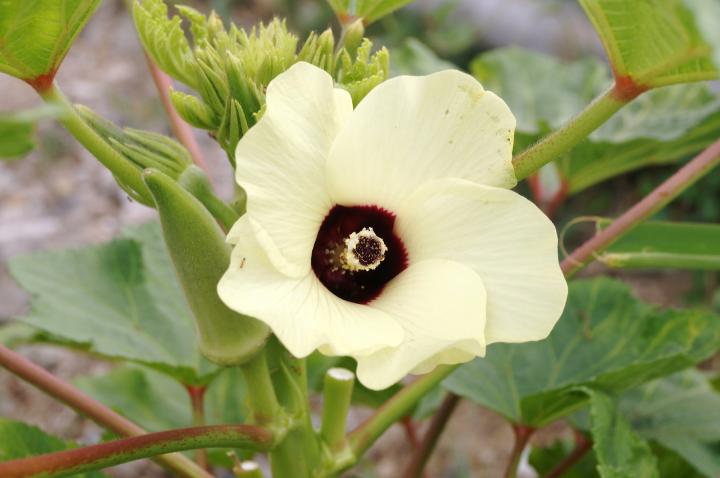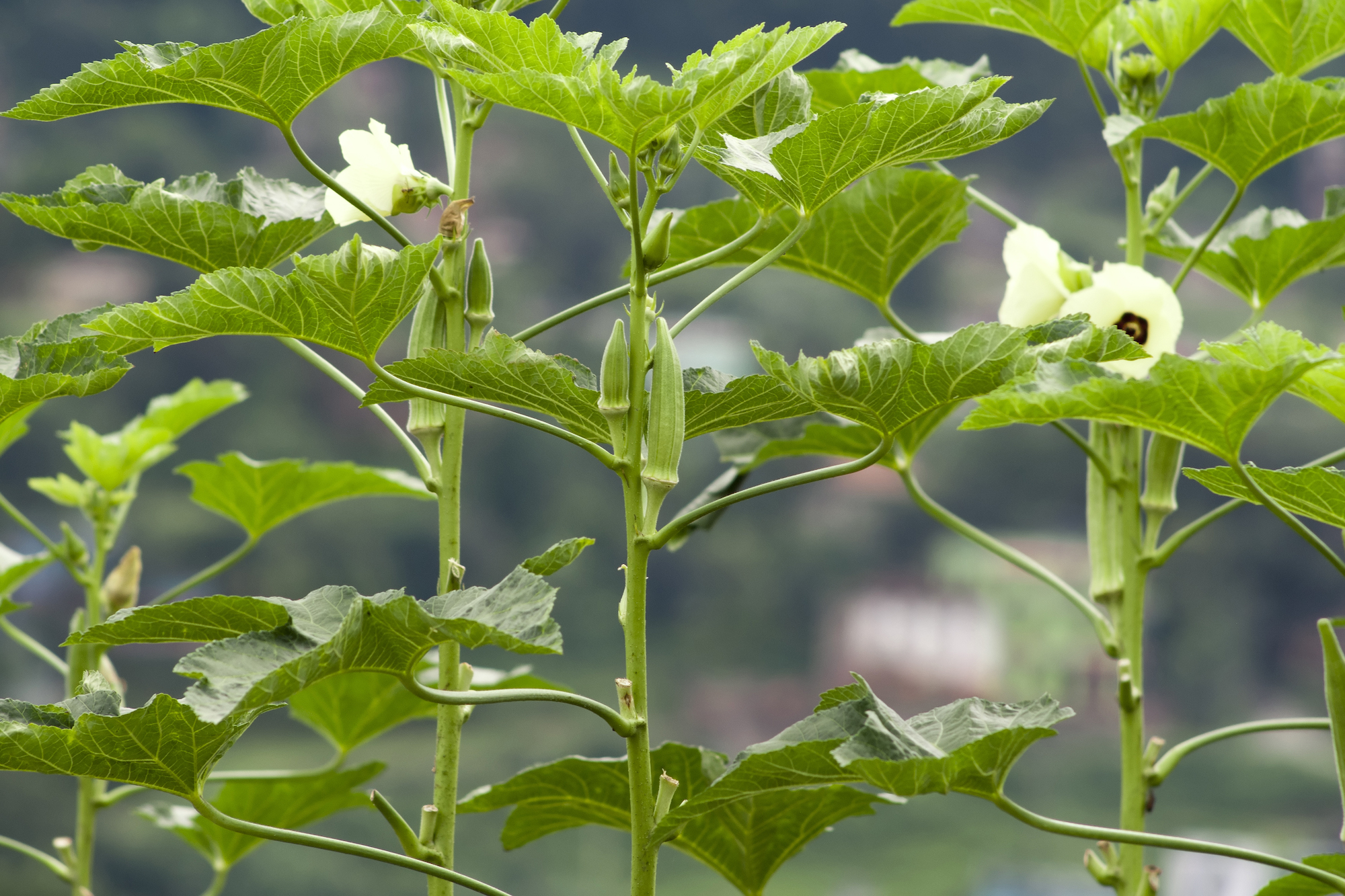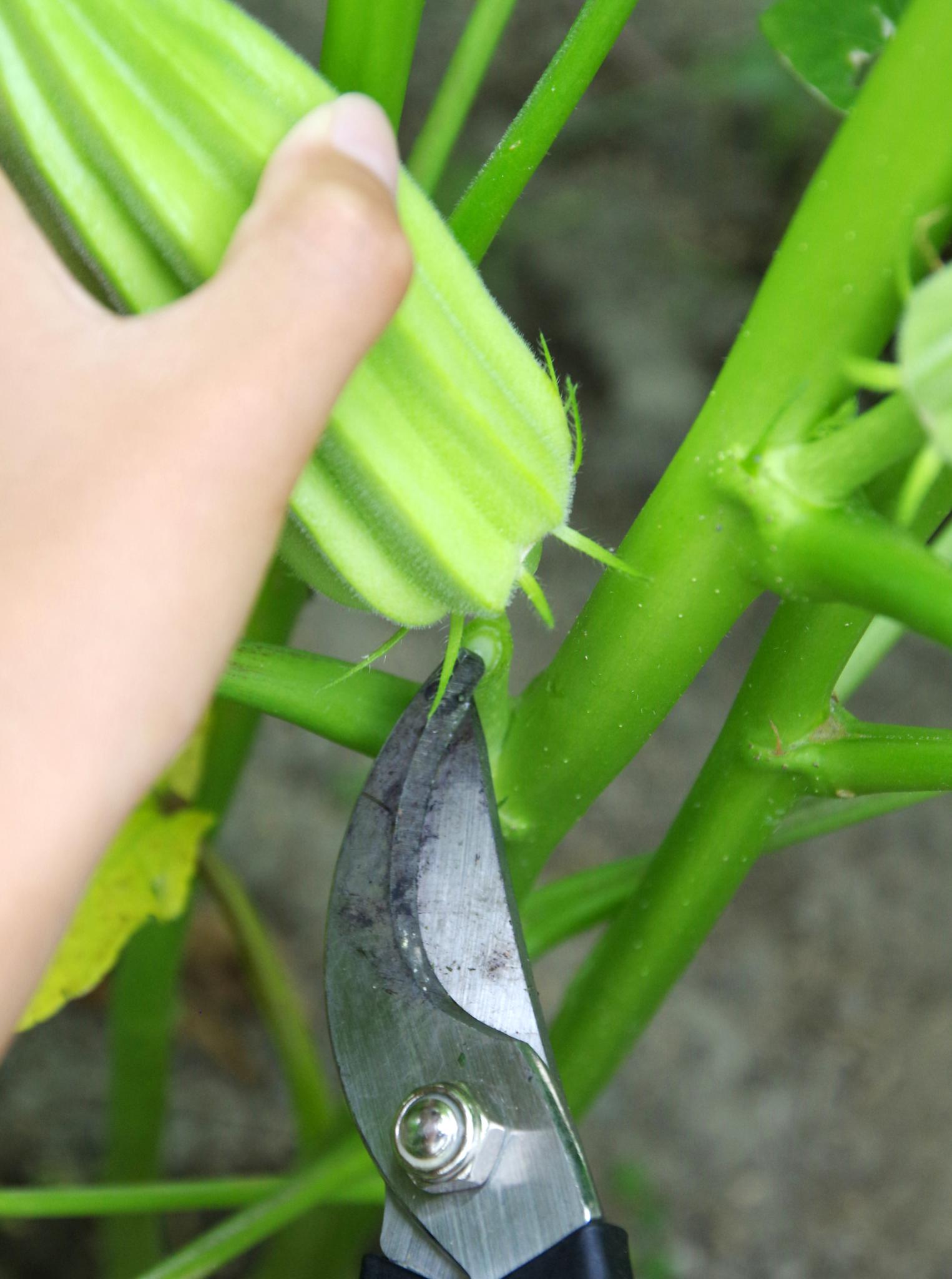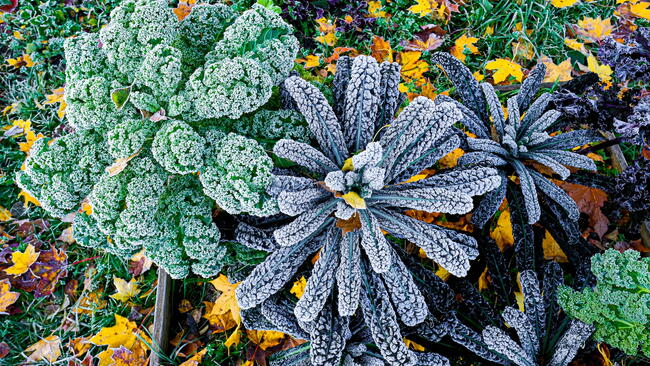
Grow vibrant, heat-loving okra for a tasty, easy-to-harvest summer crop
Read Next
Types
Standard varieties can top 8 feet or more! Dwarf types, which seldom exceed 5 feet in height, are best for containers.
- ‘Blondy’: spineless; dwarf at 3 feet tall; 3-inch pale green pods; ideal for northern growers
- ‘Burgundy’: abundant 6- to 8-inch pods (harvest at 3 inches) on 3- to 5-foot-tall plants; edible ornamental, with deep red stem, branches, leaf ribs, and fruit
- ‘Cajun Jewel’: dwarf at 2 1/2 to 4 feet tall; tasty 8-inch pods up to 1 inch in diameter
- ‘Clemson Spineless’: tasty 6 1/2-inch to 9-inch pods on 4-foot tall plants
- ‘Louisiana Green Velvet’: spineless; vigorous to 6 feet tall; good for large areas
Gardening Products
Cooking Notes
Okra can be consumed in a number of ways—breaded and deep-fried, pickled, stewed (in Indian cuisine), air-fried (a reader favorite), and even raw in the field! Of course, the most famous okra dish is probably gumbo.
For a nice stewy dish, simmer fresh tomatoes and onions and perhaps some pre-fried bacon pieces. Add chopped okra. On the stove, cook for 25 minutes, and the soft insides of okra will help create a nice thick, savory broth to serve over rice.
Or, try roasting okra to bring out its natural nuttiness. Just remove the cap, split lengthwise, and roast on a baking sheet for 25 minutes; we cover with aluminum foil for the first half of cooking.
More Like This
Hi, Josh,
You can find information on how to pick okra under the "Harvesting" section of the article above. In general, okra is ready to harvest in about 60 to 70 days. You want to look for pods about 2 to 4 inches long (about 3 to 6 days after flowering). Much bigger, and the okra can become tough and stringy. (Round-podded varieties may remain tender at larger sizes.) Wear gloves and long sleeves, as okra has tiny spines that can irritate the skin. Use a sharp knife or pruning shears to cut the pod off the stem, leaving about 1/4 inch of stem on the pod; handle pods carefully, as they are easily bruised. Keep harvesting at least every other day to encourage more pods to form. If a pod gets too big, remove it from the plant and discard (or use it in flower arrangements); leaving it on the plant may slow the development of other pods.
When buying okra at a store, look for bright green, firm (but not hard) pods that are a maximum of 4 inches long. Avoid any that are limp/soft, dried, dull in color, or moldy.
Hope this helps!
- « Previous
- 1
- 2
- …
- 10
- Next »













Comments